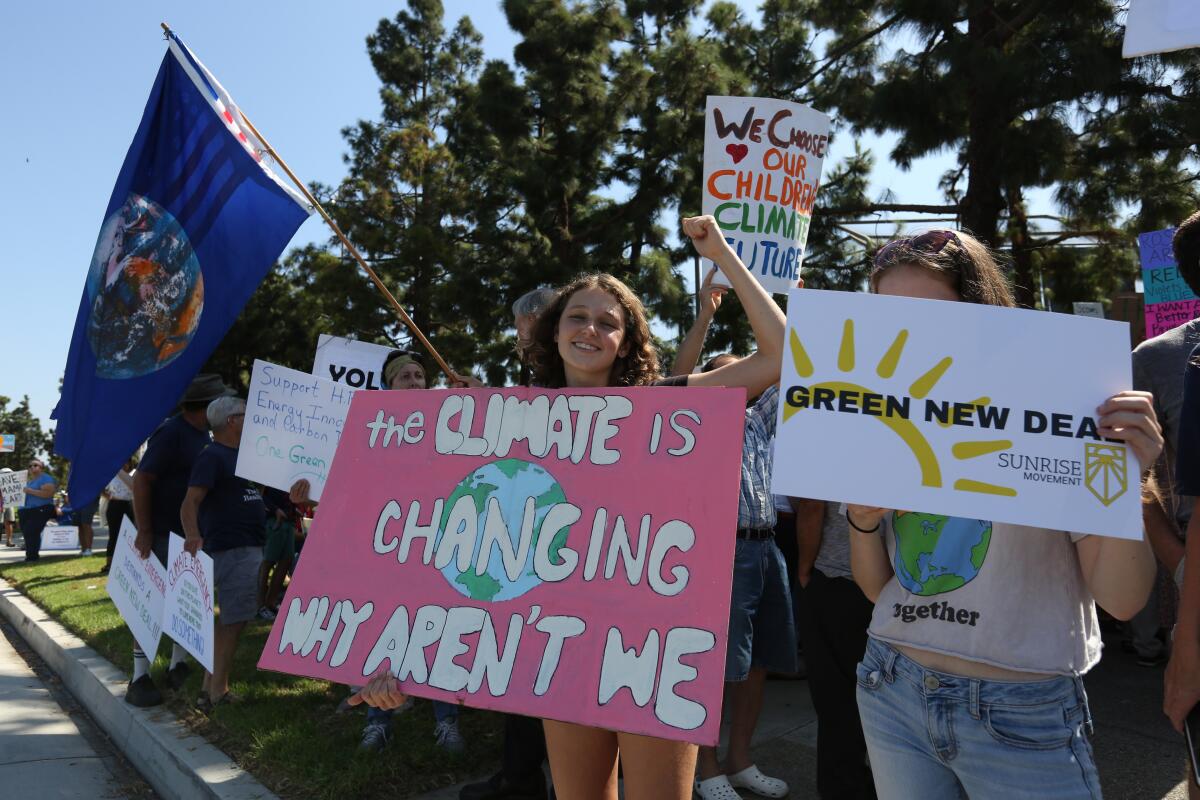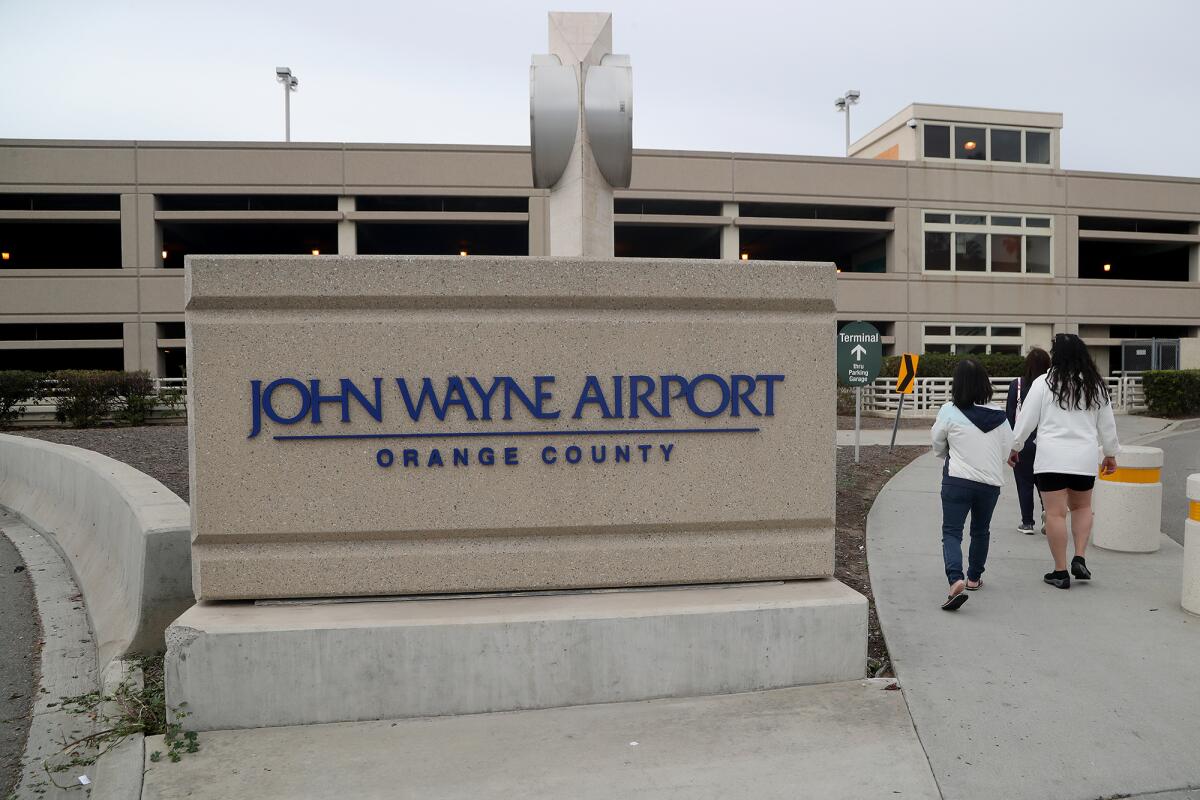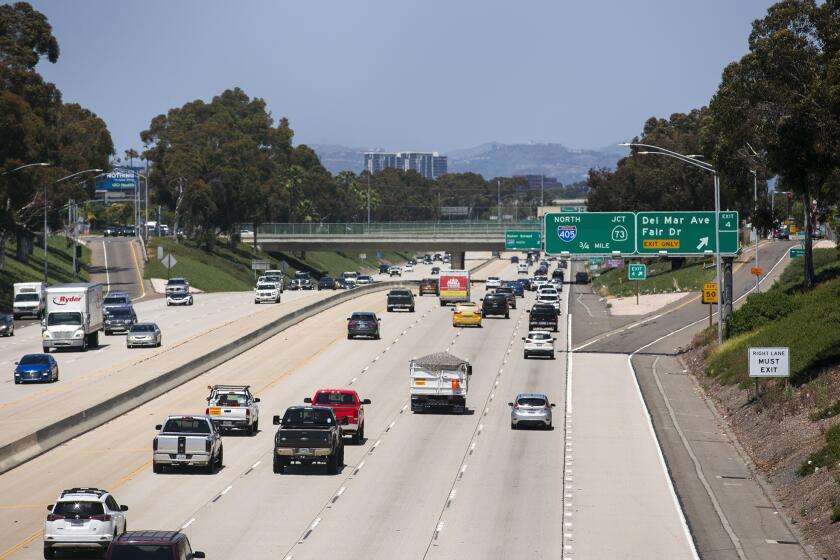Orange County drafts plan on how to tackle climate change for years to come

- Share via
Home to more than 3 million people, Orange County remains the most populous county in California without a Climate Action Plan aimed at curbing greenhouse gas emissions.
But that may not be the case for much longer.
On Aug. 1, the county published a 125-page draft Climate Action Plan, a sweeping framework for greenhouse gas reduction in unincorporated areas and at county facilities through six key focal points, including energy, mobility, resource recovery and waste.
Supervisor Katrina Foley announced the preliminary plan’s publication earlier this month.
Since being elected to the Orange County Board of Supervisors in 2021, addressing climate change has been one of her top priorities.
“It was clear that the county didn’t have a plan to comply with a lot of the different state mandates that were coming out as it relates to reduction of greenhouse gasses,” Foley said. “We also didn’t have connectivity between our departments as it related to sustainability practices, policies and procedures.”
The $500 million awarded in federal funding will go toward decarbonizing freight transportation in an effort to reduce greenhouse gas emissions.
Since then, Orange County has taken stock of how it is greening its operations, applied for a federal Climate Pollution Reduction Grant and drafted the preliminary Climate Action Plan in making up for lost time.
Los Angeles County adopted a Climate Action Plan in 2015 and updated it in June to align with California’s 2045 carbon neutral goal.
San Diego County passed its first framework in 2018, which it is now working to update by fall.
According to O.C.’s draft plan, the county’s operations alone accounted for nearly a million metric tons of carbon dioxide equivalent being released into the atmosphere in 2018, the most recent year with complete data.
Its trio of landfills accounted for a staggering 87% of facility emissions.
“With the plans that we are proposing, we have the ability to reduce our greenhouse gasses by 32% just with landfills,” Foley said. “If we do nothing, we will see an increase of 36%.”
Prior to the draft plan’s publication, Orange County Waste and Recycling applied for a $25-million grant from the U.S. Environmental Protection Agency in April to fund the implementation of a “smart landfill” system.
According to the EPA, landfill gas, which is released from decomposing organic matter, is comprised of equal amounts of methane and carbon dioxide. But methane is a much more effective at trapping heat in the earth’s atmosphere.
Tom Koutroulis, director of Orange County Waste and Recycling, sees the current model for monitoring and managing landfill gas leaks as in need of an update.
“We go out with these hand-held sniffer devices, and we have to walk hundreds of acres to do it manually,” he said. “We’re trying to find the leaks so we can remediate them. It’s like a perpetual game of Whac-a-Mole.”
The grant proposal sought to use drone technology, in part, to overhaul and modernize landfill gas detection, especially as the Frank R. Bowerman Landfill in Irvine is the ninth largest in the nation where an average of 8,500 tons of commercial waste is dumped per day.

“We can fly a drone and be much more efficient in areas that are a lot more difficult to get to,” Koutroulis said. “It’s safer. We can identify those emissions and be able to address them sooner rather than later.”
The county’s draft climate plan endorsed the proposed “smart landfill” program.
Despite Koutroulis’ best pitch, the EPA declined to award funds for it. The federal agency is slated to meet with department officials in the future about their response to the grant application.
But with the EPA having recently awarded Southern California air regulators a $500-million grant to curb climate pollution through electric alternatives for the transportation of goods, Orange County is set to benefit. The county’s draft climate plan is intended to align with the Climate Pollution Reduction Grant.
“We’re hopeful that we can work with the South Coast Air Quality Management District to compete for some of those funds,” Koutroulis said. “We’re not giving up.”
Students collected data and will present findings at the annual Ecological Society of America conference next month.
Outside of landfills, the draft plan addresses the county’s nearly 19,000 employees, more than 800 facilities and a 3,000-vehicle fleet.
It calls for “decarbonization” throughout county facilities and unincorporated communities. The plan also maps out ways to replace its fleet with zero-emission vehicles while installing more charging stations. To advance environmental justice, the county is looking to expand green space for more tree shade and recreational activities in working class neighborhoods.
Tomas Souza de Castro, a climate advocate with Climate Action Campaign, attended several county workshops on the county’s draft climate plan over the summer. He’s proud of the work his environmental group has done with the county but notes that there is always room for improvement with the draft document.
“It’s a decent start but lacks a fundamental piece,” he said. “It’s a draft, so it may change, but right now it doesn’t have a quantifiable road map of how the county is going to reach, at least, the state targets.”
Souza de Castro points to San Diego County, where its Climate Action Plan has a defined target of a 40% reduction in greenhouse gases by 2030 — and lists all the measures going to be taken to get there.
Climate Action Campaign submitted comments on the draft plan before the deadline for public review ended on Wednesday.
Souza de Castro is encouraged by seeing building decarbonization included in the draft, as well as an emphasis on transit-orientated development, which promotes more walkable communities.

In addressing airport pollution, the county seeks to absorb the Climate Action Plan John Wayne Airport developed for its operations that was approved in 2018.
“We want to have one umbrella document,” Foley said. “We already are moving forward with significant programs and initiatives to reduce greenhouse gasses at John Wayne Airport. It’s one of our dirtiest assets.”
The airport has switched from diesel to electric ground support equipment and now uses a pipeline for jet fuel to reduce greenhouse gas emissions.
According to a 2023 annual report, John Wayne Airport reduced its fleet nitrogen oxides emission factor by 12% from its 2017 baseline.
With the public review period now over for the county’s draft climate plan, the document is slated to be discussed, but not voted on, at a Board of Supervisors meeting next month.
A vote by board members on a California Environmental Quality Act analysis of the plan is still several months away.
Souza de Castro sees the $500-million EPA grant as a “carrot” for the county and cities within it to get serious about greenhouse gas reduction through Climate Action Plans.
“A lot of Orange County cities are are cash-strapped right now,” he said. “A Climate Action Plan can be something that the county can use to leverage funds for those cities.”
All the latest on Orange County from Orange County.
Get our free TimesOC newsletter.
You may occasionally receive promotional content from the Daily Pilot.






